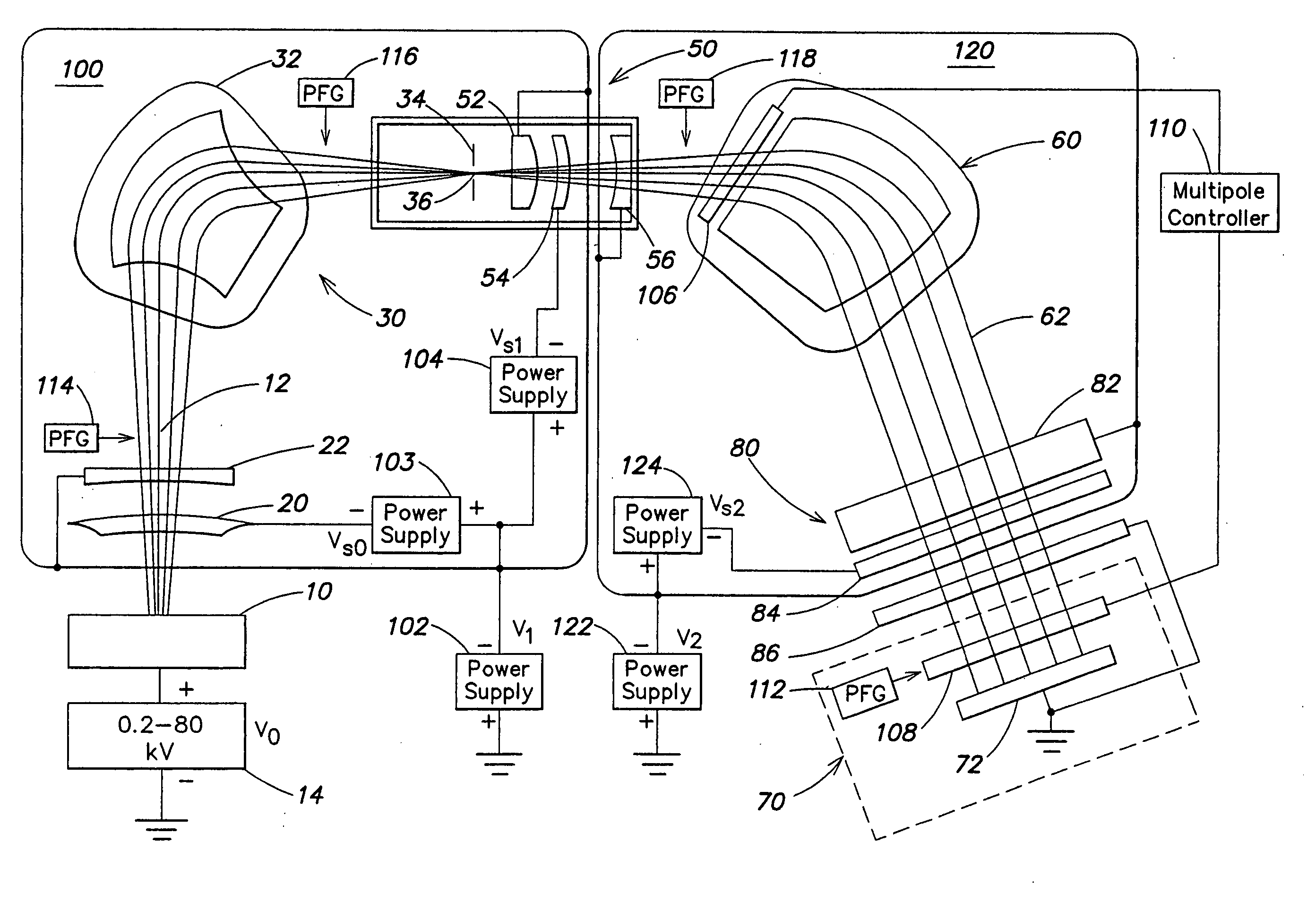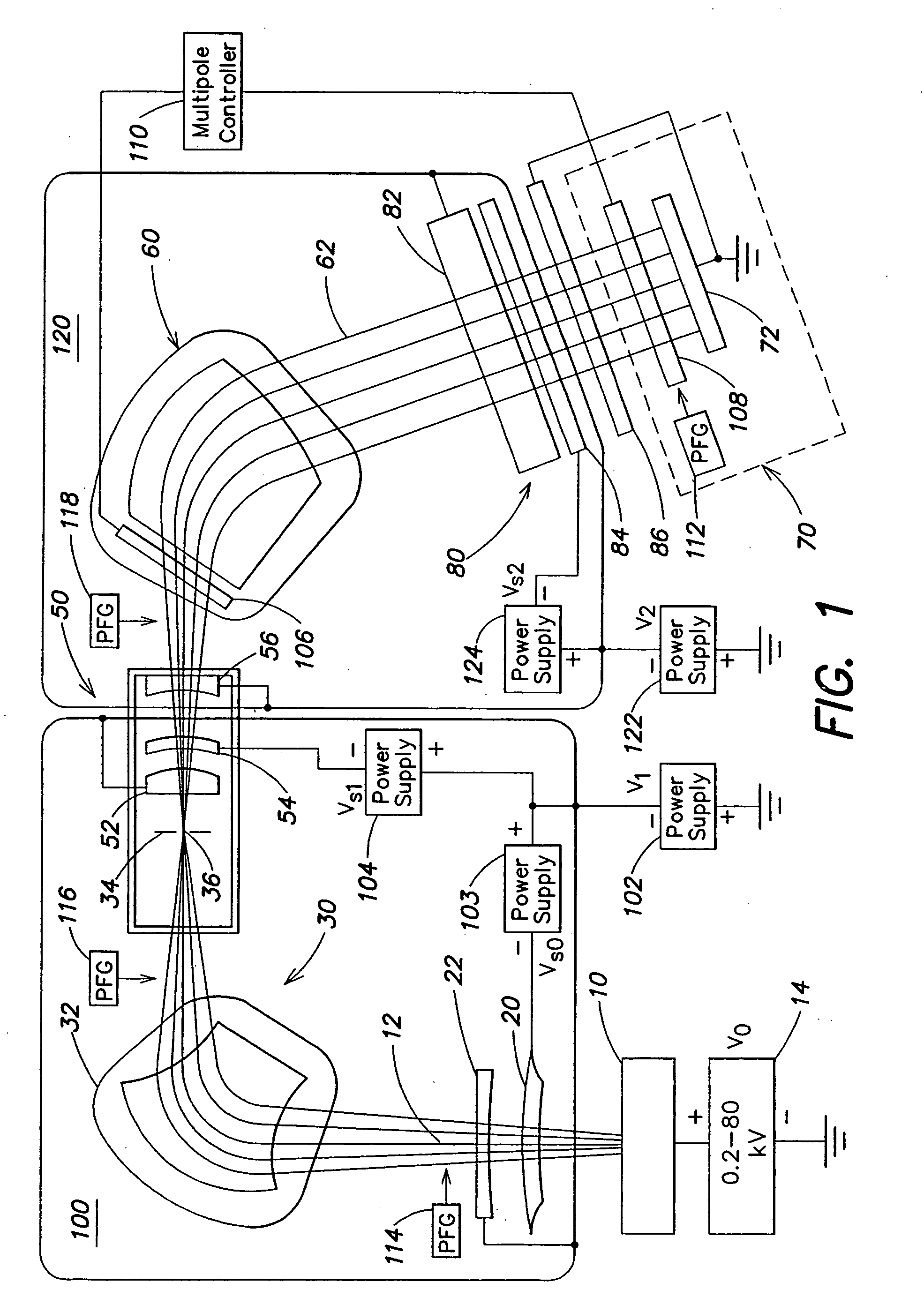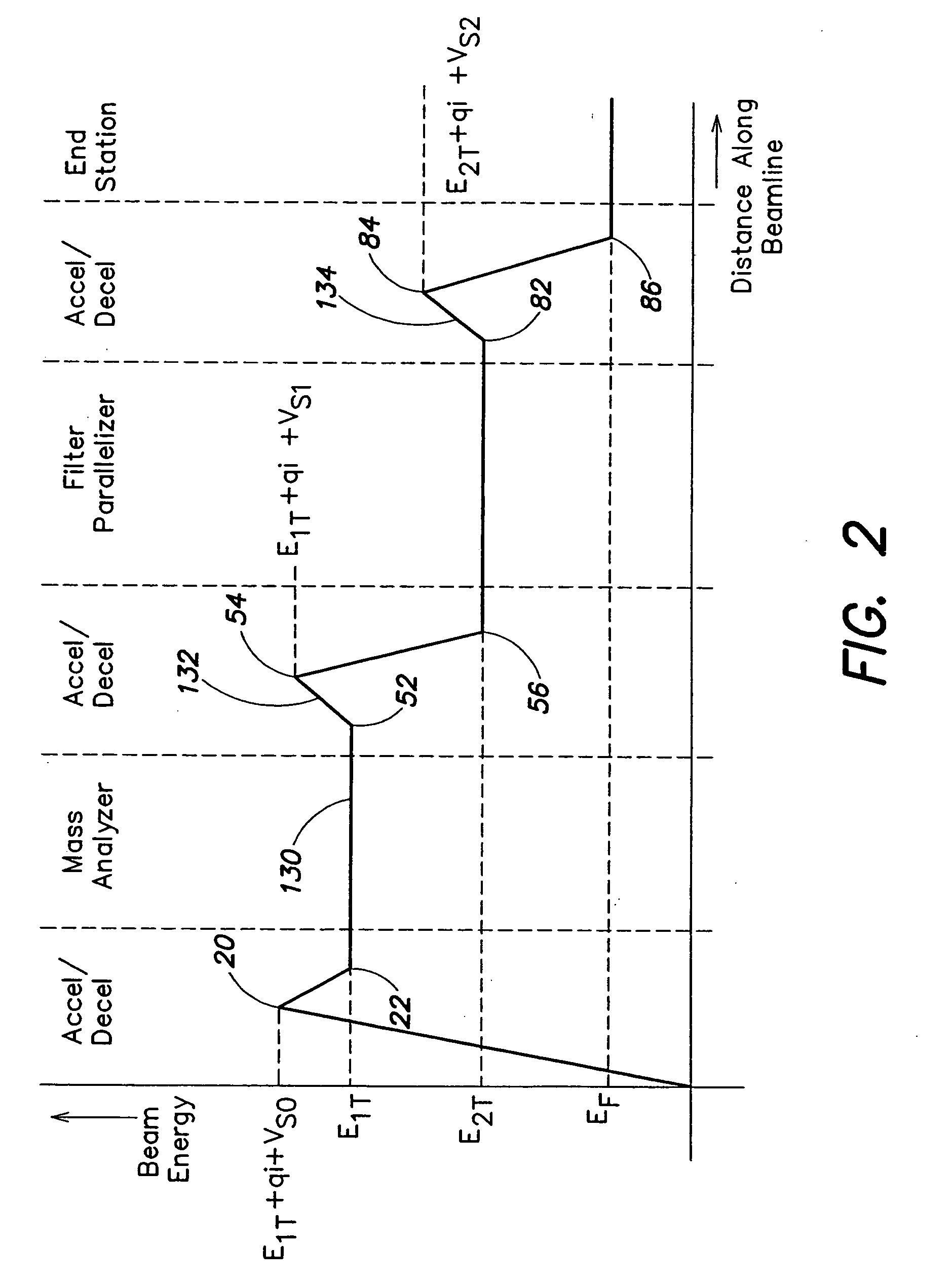Ion implanter having enhanced low energy ion beam transport
a low energy, ion beam technology, applied in the direction of irradiation devices, electric discharge tubes, electrical apparatus, etc., can solve the problems of reducing throughput, affecting throughput, and not being able to efficiently achieve the energies required,
- Summary
- Abstract
- Description
- Claims
- Application Information
AI Technical Summary
Benefits of technology
Problems solved by technology
Method used
Image
Examples
first embodiment
[0045] A section of the ion implanter beamline in accordance with the invention is shown in FIG. 3. A magnetic steerer 200 is positioned upstream of resolving aperture 36 and is configured to perform magnetic steering of ion beam 12. Magnetic steerer 200 may correct, at least partially, unwanted deviations of ion beam 12 from the beam path. The beam path is the nominal path followed by ion beam 12 through the ion optical elements of the ion implanter from ion source 10 to wafer 72 when the ion implanter is operating within acceptable limits. Magnetic steerer 200 is characterized by a relatively small insertion length along the beam path and can perform vertical steering, horizontal steering, or both, depending on its configuration. For example, magnetic steerer 200 can steer ion beam 12 through resolving aperture 36, through electrodes 52, 54 and 56 of deceleration stage 50 and between the polepieces of angle corrector magnet 60 (FIG. 1). Steering corrections in the plane normal to ...
second embodiment
[0046] A section of the ion implanter beamline in accordance with the invention is shown in FIG. 4. In the embodiment of FIG. 4, deceleration stage 50 is configured with at least one grid electrode. The deceleration stage 50 shown in FIG. 4 includes an upstream electrode 210, a suppression electrode 212, and a deceleration electrode 214, each of which is configured as a grid electrode. In general, the grid electrode is a conductor having a relatively small dimension along the beam path and having multiple openings for passing ion beam 12. Each grid electrode is electrically connected to a suitable bias voltage.
[0047] The grid electrode offers several advantages. Since the potential can be defined in an essentially zero length electrode, the total effective lens length and the region of deneutralization can be reduced to a minimum. The grid electrode causes the diverging portion of the gap lens fields to be eliminated and converts the lens to strong focus as a consequence, allowing t...
third embodiment
[0048] A section of the ion implanter beamline in accordance with the invention is shown in FIG. 5. In the embodiment of FIG. 5, magnetic steerer 200 is located upstream of resolving aperture 36, and deceleration stage 50 includes grid electrodes 210, 212, and 214. As a result, the benefits of magnetic steerer 200 and grid electrodes 210, 212, and 214 in achieving low energy ion beam transport through the ion implanter are combined.
[0049] A schematic diagram of an embodiment of magnetic steerer 200 and associated system elements is shown in FIG. 6. Magnetic steerer 200 is viewed in the direction of ion beam transport in FIG. 6. Magnetic steerer 200 includes a magnetic frame 250 and one or more electrical coils wound around magnetic frame 250. The embodiment of FIG. 6 includes coils 252 and 254 for producing x-direction magnetic fields Bx, and coils 256 and 258 for producing y-direction magnetic fields By,
[0050] Magnetic frame 250 may be a closed loop band of steel or other magnetic...
PUM
 Login to View More
Login to View More Abstract
Description
Claims
Application Information
 Login to View More
Login to View More - R&D
- Intellectual Property
- Life Sciences
- Materials
- Tech Scout
- Unparalleled Data Quality
- Higher Quality Content
- 60% Fewer Hallucinations
Browse by: Latest US Patents, China's latest patents, Technical Efficacy Thesaurus, Application Domain, Technology Topic, Popular Technical Reports.
© 2025 PatSnap. All rights reserved.Legal|Privacy policy|Modern Slavery Act Transparency Statement|Sitemap|About US| Contact US: help@patsnap.com



